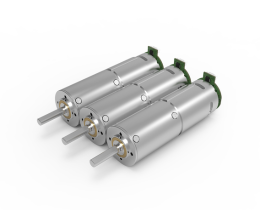Why Your Next Project Needs a DC Planetary Gear Motor (And Why You’ll Thank Yourself Later)
Let’s cut to the chase: not all motors are created equal. If you’ve ever dealt with machinery that groans under load, overheats after hours of use, or just… feels like it’s fighting against itself, you know the frustration. Enter the DC planetary gear motor—a compact powerhouse that’s quietly redefining what “reliable motion” means.
.webp)
Here’s the kicker: planetary gear systems aren’t new. But pair them with a DC motor, and suddenly you’ve got a synergy that’s hard to ignore. Think of it like coffee and morning sunlight—they work better together. The planetary gear design distributes load across multiple gears, reducing wear and tear. The DC motor? It’s the silent workhorse offering precise control. Combine them, and you’ve got efficiency that doesn’t quit.
“But wait—what makes this better than a regular gear motor?” Glad you asked. Picture a crowded elevator. A traditional gear system is like stuffing everyone into one corner. Planetary gears? They spread the weight evenly. Less strain, smoother operation, longer lifespan. Simple math, really.
Now, let’s talk torque. High torque in a small package isn’t just convenient—it’s a game-changer. Imagine automating a conveyor belt that handles irregular loads without stuttering. Or a medical device that needs to move with surgical precision, even at low speeds. A DC planetary gear motor doesn’t just “handle” these tasks; it thrives in them.
Q: What about maintenance?
A: Ever had a motor that demanded more attention than a toddler with a juice box? These units are built to run lean. Sealed designs, minimal friction, and heat dissipation that doesn’t rely on magic (or frequent oil changes).
KPOWER’s take on this tech leans into adaptability. Their motors aren’t one-size-fits-all—they’re more like a tailored suit. Need something for harsh environments? Dust-resistant models have you covered. Working with tight spaces? Their compact variants slip in without drama. It’s engineering that listens, not just functions.
Still not convinced? Let’s get nerdy for a second. The gear reduction ratio in planetary systems allows for higher torque without sacrificing speed control. Translation: you get muscle and finesse. For applications like robotics, renewable energy systems, or even advanced HVAC setups, that balance isn’t just nice—it’s non-negotiable.
Here’s the thing: innovation isn’t always about reinventing the wheel. Sometimes, it’s about refining the gears that turn it. DC planetary gear motors aren’t flashy, but they’re the unsung heroes in machines that just… work. And in a world where downtime costs more than ever, “just working” is pretty revolutionary.
So, next time you’re sketching out a project, ask yourself: do you want a motor that’s merely adequate, or one that elevates the entire design? The answer might just orbit around a planetary gear system.


































.webp)

